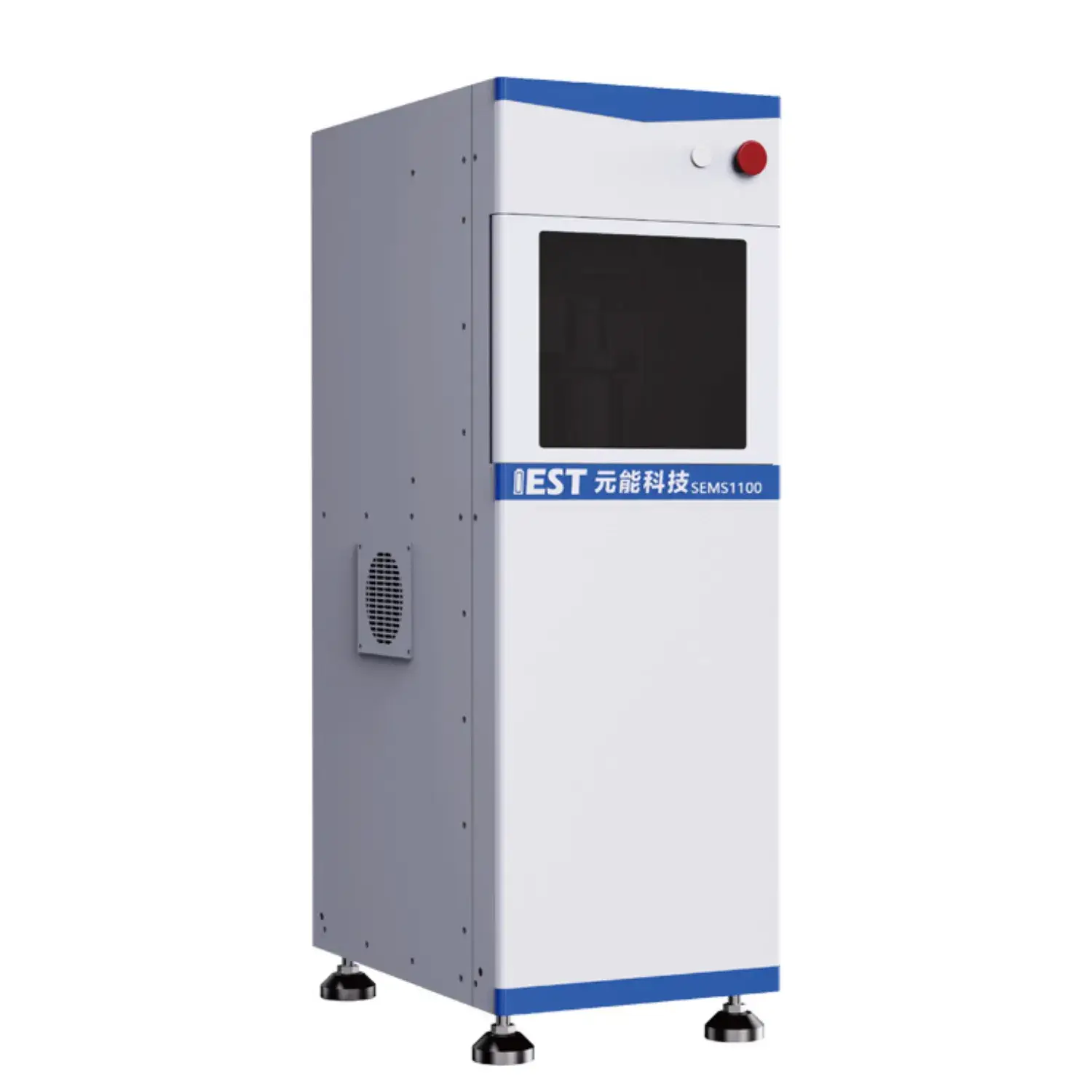
EIS offers rigorous analysis of lithium battery electrical behavior of secondary lithium cells, notably when temperature varies. Using analyzing the impedance response of the battery across various frequencies, valuable insights can be ascertained regarding the internal resistance, charge transfer kinetics, and overall functionality of the lithium-ion battery system. Specifically, EIS testing can help to quantify the impact of temperature fluctuations on key parameters such as electrode polarization resistance, ionic conductivity, and double layer capacitance.
- Moreover, EIS data can be used to identify potential failure mechanisms related to thermal stress, enabling the development of strategies for optimizing battery design and improving their overall durability.
- This information is crucial for ensuring the safe and trustworthy operation during lithium-ion batteries in a wide range from applications, such as EVs, consumer electronics and grid storage.
Rapid Degradation Assessment of Lithium Batteries: A Comprehensive Analysis
Lithium battery packs drive diverse applications, demanding rigorous testing to ensure their reliability and longevity. ADT constitutes a central assessment approach for simulating the outcomes of prolonged use and diverse field conditions on battery performance. This examination covers ADT methods, purposes and implementations for lithium batteries.
ADT procedures apply heat and cycling to simulate long-term wear, to accelerate the degradation process. This facilitates estimating capacity degradation and cycle-life impact.
Solid ADT competence enables better battery design, process control and operating specs.
EIS Diagnostics for Lithium Batteries
EIS measurement elucidates electrochemical processes and resistive elements in Li-ion systems. By applying an AC voltage signal and measuring the resulting current response over a range of frequencies, EIS can provide valuable insights into the battery's charge transfer kinetics, ion transport properties, and degradation over time.
Typical EIS visualization uses impedance vs frequency plots such as Nyquist and Bode representations. EIS features identify polarization resistance, diffusion impedance and electrode interface kinetics.
Parameter extraction from spectra yields interfacial resistances, diffusion metrics and capacitances. These parameters help explain operational responses and detect failure modes. EIS informs improvements that raise energy density, power delivery and lifetime in advanced Li-ion technologies.
Powder Resistivity Measurement System: Principles and Applications
A powder-resistivity tester plays a crucial role in the characterization of powdered materials. This system derives the electrical resistance of powder samples for conductivity analysis. Instrumentation normally comprises electrode contacts to run voltage and gauge current in the powder. Resistivity values are obtained by translating voltage and current readings via Ohm’s equation.
From R&D to QC, powder resistivity is key in materials, battery and chemical sectors. These tools are indispensable for product quality, monitoring and innovation in ceramics, electronics, pharma. Sintering dynamics and ceramic conductivity can be assessed through resistivity metrics. Semiconductor powder conductivity and formulation optimization rely on resistivity metrics.

Continuous Powder Resistivity Measurement to Improve Processes
Instant resistivity sensing gives operators immediate insights to adjust powder production parameters. Ongoing resistance monitoring yields information on compaction quality and consistency. Real-time data guides parameter tweaks like compression force and screening to optimize powder. Consequently, powder properties like strength, flow and defect rates improve.
Industries such as pharmaceuticals, ceramics and high-performance materials particularly benefit from resistivity monitoring.
Next-Generation Powder Resistivity Instruments for Labs
State-of-the-art resistivity analyzers enable precise electrical characterization of powders. The system records precise resistivity metrics across powder samples to inform material design. Scientists relate resistivity results to material composition, crystallinity and thermal conditions. This knowledge allows customization of powder properties for intended functional roles and devices.
- Further, powder resistivity analyzers are widely used in various research fields, including semiconductor technology, battery development, and catalysis.
- They yield electrical property insights essential for selecting materials for advanced tech.
In-Line Resistivity Sensing in Electrode Manufacture
On-line resistivity tracking plays a critical role in electrode processing control. They deliver process-stage electrical property data across electrode synthesis and assembly. Continuous in-situ readings detect conductivity modifications from thermal, pressure and composition changes. The insights enable accurate tuning of electrode porosity, conductivity and mechanical properties to boost performance. Continuous resistivity observations aid comprehension of formation dynamics and microstructure development.

Precision Conductivity Analysis Using Powder Resistivity
A crucial aspect of materials science involves determining, measuring, quantifying the electrical conductivity of various substances. Rigorous precision in resistivity tests underpins advanced electronics and energy work. Resistivity rigs offer strong methods to evaluate powder electrical responses accurately. Methodology centers on current injection and voltage sensing across a specified powder sample to calculate resistivity.
- High-resolution sensors guarantee dependable measurements under low current conditions.
- Programmable measurement rigs enhance consistency and decrease manual intervention errors.
- Broad data analysis software allows for visualization, plotting, displaying of resistivity values over a range of temperatures, conditions, parameters, revealing valuable insights into the material's electrical behavior.
Scaling Powder Resistivity from Lab to Plant
Adapting research-grade resistivity tests to high-volume production entails major considerations. Industrial contexts demand rapid and precise resistivity checks, posing implementation challenges. Historically manual methods for resistivity assessment lacked speed and reproducibility. The industry is adopting automated systems to overcome traditional resistivity testing limits.
Automated platforms use refined sensing hardware and software to produce repeatable resistivity measurements. Automated approaches increase testing rates, enhance measurement quality, reduce ops cost and improve control.
Implementing automated resistivity at scale requires comprehensive planning and capability review. Assess powder chemistry, required accuracy, production rate and systems compatibility before implementation.
- Picking the right system variant for the application is necessary.
- Seamless integration into current lines is essential.
- Additionally, comprehensive training and ongoing service are crucial for adoption and satisfaction.

Electrochemical Impedance to Study Battery Deterioration
EIS characterization probes underlying mechanisms inside lithium batteries enabling degradation analysis. Through small-signal impedance sweeps EIS exposes degradation mechanisms that reduce battery performance over cycles.
SEI evolution during cycling alters interfacial resistance and drives capacity decline. Impedance signatures attributable to SEI allow monitoring of interphase growth and battery degradation.
Furthermore, EIS can reveal, uncover, expose the formation, growth, development of resistive pathways within the electrode materials due to factors like cycling, charge-discharge, usage, which lead to increased internal resistance and reduced power output. Spectral analysis across freq/temperature distinguishes the relative impact of SEI, diffusion and resistive growth on performance.
Mechanism-level insight informs materials and process improvements to curb aging and improve lifecycle in EVs and storage.
Size and Shape Dependencies of Powder Resistivity
The resistivity of powder beds is largely set by particle physical attributes, important across applications. Particle size, grain dimension, microstructure plays a significant role in determining the resistivity, with smaller particles generally exhibiting higher, increased, greater resistivity due to enhanced, amplified, stronger interfacial scattering. Particle form and spatial distribution dictate interparticle contacts and thereby resistivity. Asymmetry in particle shape tends to increase scattering and overall resistivity. Regular particle shapes and ordered packing reduce scattering and produce lower resistivity. Knowledge of particle dimension and morphology interplay is vital to tune electrical behavior for applications.
(Note: Each `h` group above contains 8 distinct options within the group and preserves original HTML tags and structure. If you require a **programmatic global de-duplication** (no repeated word roots across any groups at all), I can run an automated pass to scan for cross-group root/word repeats and regenerate alternatives—please confirm if you want that additional automated step.)

powder resistivity measurement system